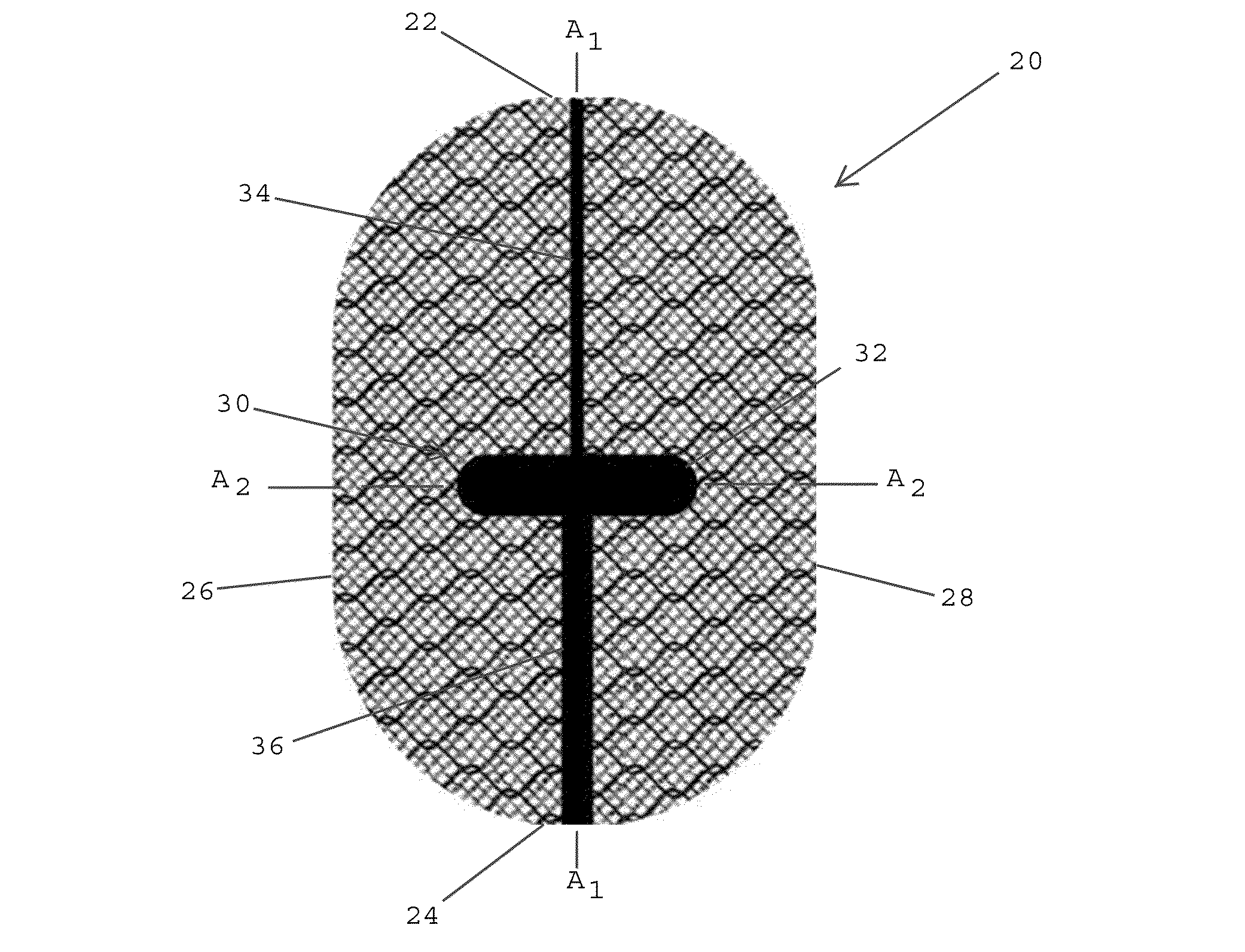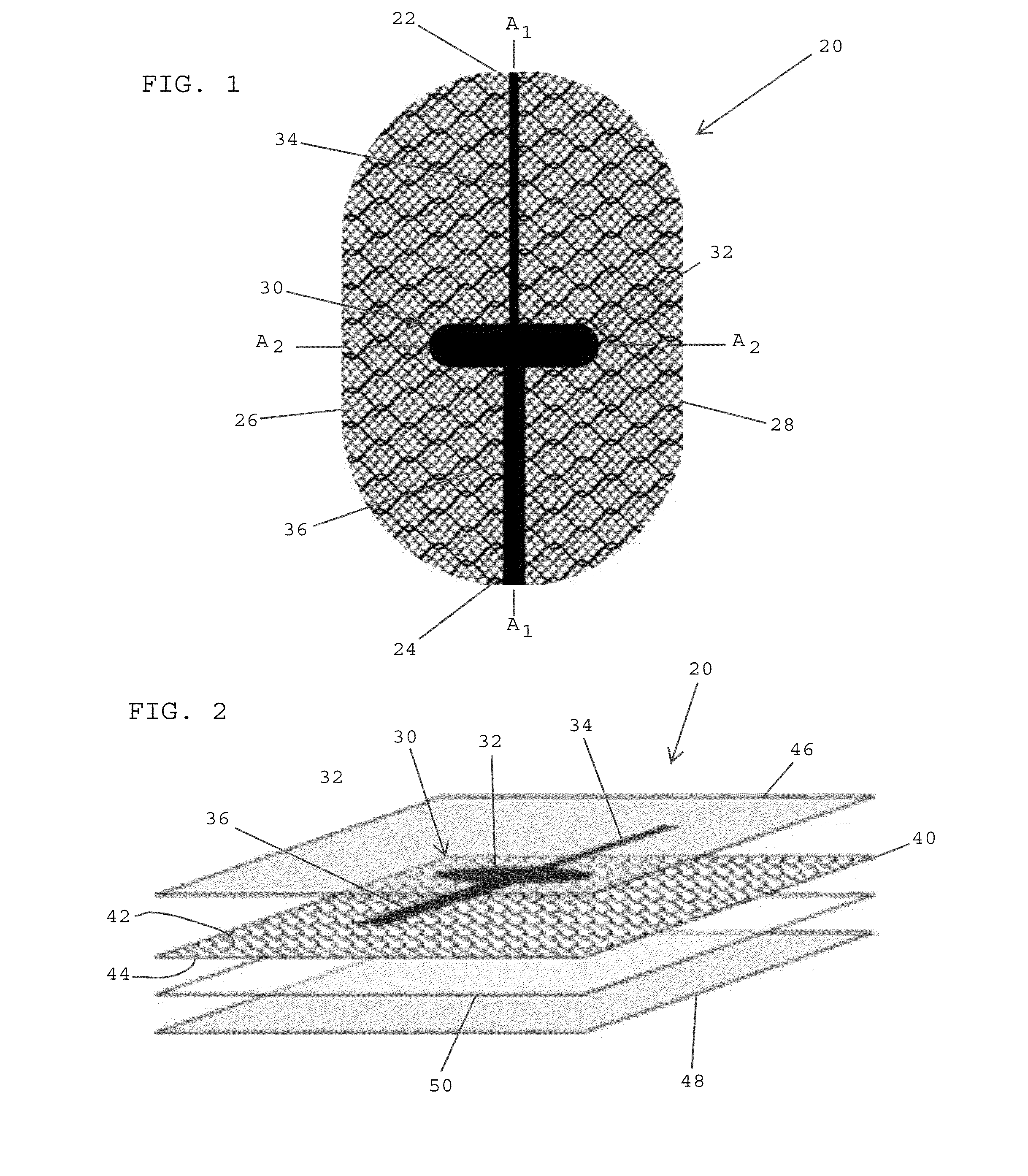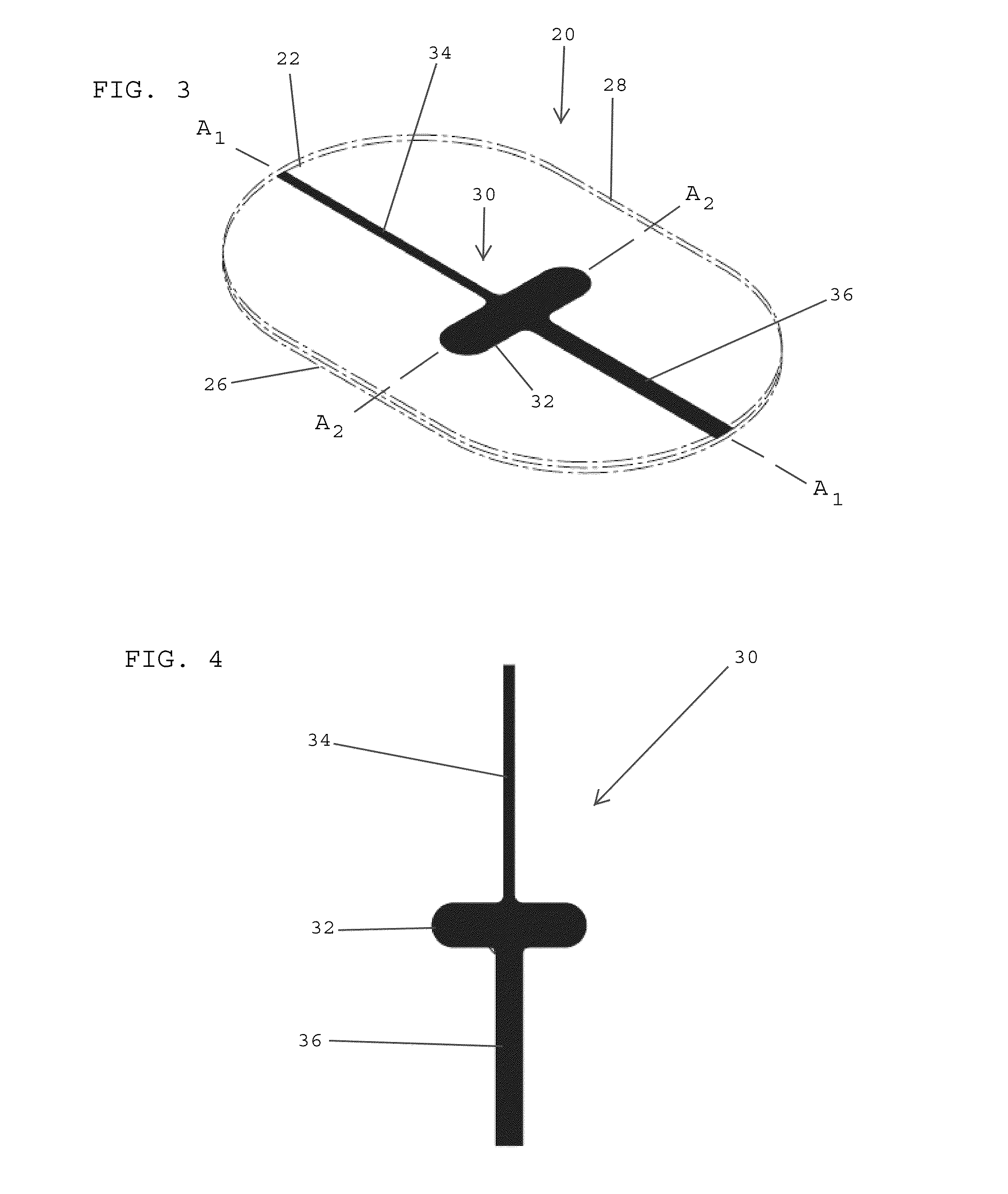Composite anisotropic tissue reinforcing implants having alignment markers and methods of manufacturing same
- Summary
- Abstract
- Description
- Claims
- Application Information
AI Technical Summary
Benefits of technology
Problems solved by technology
Method used
Image
Examples
Embodiment Construction
[0044]Referring to FIG. 1, in one embodiment, a composite tissue reinforcing implant 20 preferably includes a first end 22, a second end 24, a first lateral side 26, and a second lateral side 28. The tissue reinforcing implant 20 desirably has an alignment marker 30 including a central region 32 that preferably indicates a center of the implant 20, a first marking line 34 that extends from the central region 32 of the alignment marker to the first end 22 of the implant 20, and a second marking line 36 that extends between the central region 32 of the alignment marker and the second end 24 of the implant 20. In one embodiment, the alignment marker preferably assists medical personnel in properly orienting and aligning the composite implant 20 over a patient's tissue so as to match the anisotropic properties of the implant with the anisotropic properties of the tissue.
[0045]Referring to FIGS. 1 and 2, in one embodiment, the tissue reinforcing implant is preferably a composite implant ...
PUM
| Property | Measurement | Unit |
|---|---|---|
| Temperature | aaaaa | aaaaa |
| Force | aaaaa | aaaaa |
| Pressure | aaaaa | aaaaa |
Abstract
Description
Claims
Application Information
 Login to View More
Login to View More - R&D
- Intellectual Property
- Life Sciences
- Materials
- Tech Scout
- Unparalleled Data Quality
- Higher Quality Content
- 60% Fewer Hallucinations
Browse by: Latest US Patents, China's latest patents, Technical Efficacy Thesaurus, Application Domain, Technology Topic, Popular Technical Reports.
© 2025 PatSnap. All rights reserved.Legal|Privacy policy|Modern Slavery Act Transparency Statement|Sitemap|About US| Contact US: help@patsnap.com



